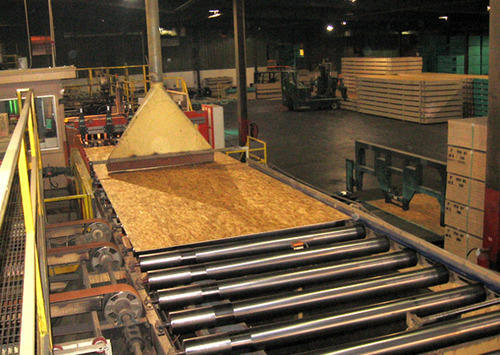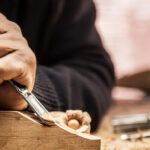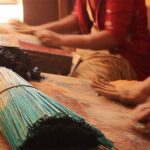Plywood is a popular interior material for housing, ships, vehicles, and furniture. It is an economical, factory-produced sheet of wood with precise dimensions that does not warp or crack with changes in atmospheric moisture. Ply is an engineered wood product made from three or more ‘plies’ or thin sheets of wood. These are glued together to form a thicker, flat sheet. Plywood has the structural strength of the wood it is made from. This is in addition to the properties obtained from its laminated design. Broadly, there are three types of plywood according to the usage. These are structural plywood, external plywood, internal plywood and marine plywood. Plywood manufacturing is a profitable venture for new entrepreneurs.
PLYWOOD MANUFACTURING – MARKET OPPORTUNITY
The demand for plywood is directly related to the growth of the housing construction sector, household and office furniture’s, vehicles assembly and repair service. The industry is highly fragmented, with a major chunk of production coming from small manufacturers. Plywood has various uses in housing construction for floors, roots, walls and doors. Inside a house, plywood often is used in a variety of furnishings, including cabinetry, shelves, tables and wall paneling. The demand for these items, in turn, will depend on income, population growth, urbanization, and the manufacturing sector. The projected demand for plywood will increase from about 1.6 million cubic meters in the year 2013 to about 2.4 million cubic meters and 3.2 million cubic meters in the year 2018 and 2022, respectively.
PLYWOOD MANUFACTURING BUSINESS REGISTRATION & LICENSE
In starting a plywood manufacturing business, you must have different registrations and licenses. Check your state’s law. Here we have a furnished the general requirements.
1. Incorporate the firm by registering with ROC
2. Apply for Trade License from local Municipal Authority
3. Apply for Udyog Aadhaar MSME online registration. This is optional.
4. Apply for VAT Registration
5. Obtain BIS certification (ISI Mark)
6. Compliance with the norms of ‘Central Empowered Committee’ is the must.
7. Obtain Factory License
PLYWOOD MANUFACTURING MACHINE & UNIT SETUP
You will need to have a total of 1,800 Sq. m area of land out of which 1,000 Sq. m is the built-up area which includes processing area, raw material stock area, offices etc. The major required utilities of this manufacturing operation are electricity, furnace oil, and water. The list of machinery are as follows:
1. Peeler
2. Veneer router
3. Veneer clipper
4. Veneer drying machine
5. Veneer splinter
6. Veneer splicer
7. Gluing machine
8. Conveyor (roller)
9. Pressing machine
10. Drying press
11. Plywood edge making machine
12. Sanding machine (scraper belt, drum)
13. Boiler with its accessories
14. Polishing
PLYWOOD MANUFACTURING PROCESS & RAW MATERIALS
Plywood manufacturing process is simple. It comprises of three major steps. These are:
1. Preparation of logs
This section consists of two major log treatment operations. In the first one, logs are cut by chain saw to the desired length and fed to the lathe to make veneer sheets. In the second high-density logs are cooked in cooking vats or steam chambers to facilitate the cutting operation.
2. Veneer manufacturing from logs
Under this process several physical actions such as cutting, clipping, drying, joining, etc. are conducted on the log obtained from the first section in order to prepare good quality veneer suitable for plywood making.
3. Plywood manufacturing from veneer.
The initial operation is the preparation of glue for the process. The proceeding step is the spreading of glue on the core veneer sheets and the final is the pre-pressing of the stacked sheets by the cold press.
After pre-pressing, the obtained plywood is fed to the hot-press machine, where it is subjected to a pressure at a specified temperature. Then, the plywood is cut to a predetermined size by cutting machine. The final step of plywood manufacturing is moisture free storage and transport.


